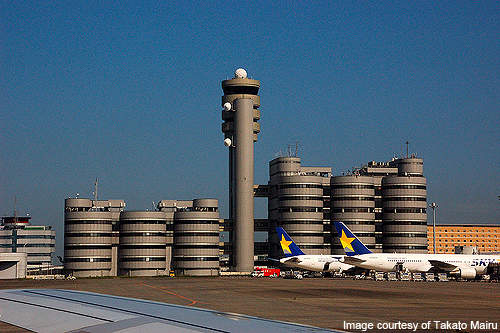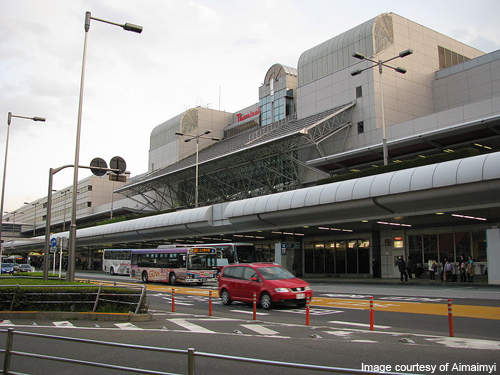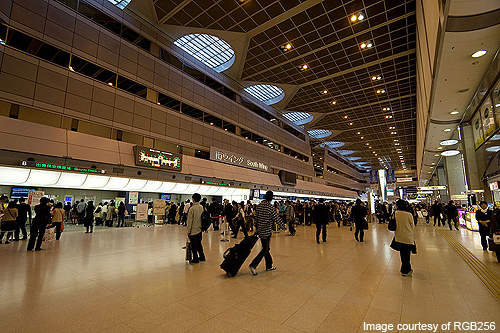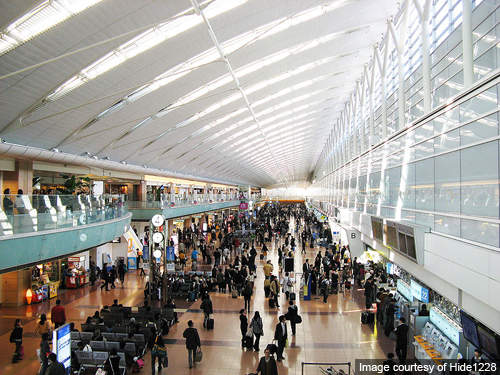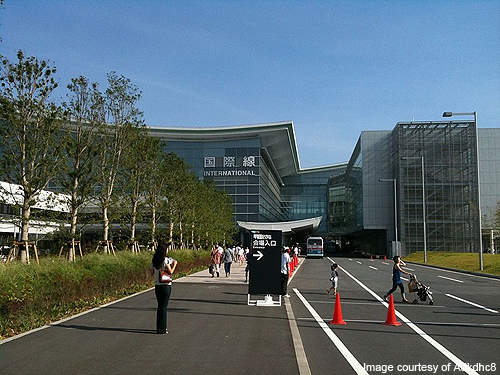Haneda Airport, also known as Tokyo International Airport, is located in Öta, Tokyo, 14km south of Tokyo Station. It serves the Greater Tokyo region. It was the second busiest airport in Asia and the fourth busiest in the world in 2009.
The Tokyo Aviation Bureau, the Ministry of Land Infrastructure and Transport (airfield), and the Japan Airport Terminal operate the airport.
The airport acts as a base for Japan Airlines, Skynet Asia Airways and Nippon Airways. The passenger traffic handled by the airport in 2009 was 62.1m. The airport can handle approximately 90m passengers following completion of its expansion in 2010.
Expansion
Increasing passenger traffic necessitated expansion of the airport. As part of the expansion a new international terminal and runway were built and the existing terminal 2 is being expanded.
The new international terminal is designated terminal 3. Construction of the terminal was started in 2008 and completed in October 2010. The five storey terminal covers an area of 159,000m². The cost of construction of terminal 3 was partly recovered from revenues obtained from duty-free concessions. The terminal was opened on 21 October 2010.
“Construction of the new terminal was started in 2008 and completed in October 2010.”
Expansion of terminal 2 was started in 2007 and was completed in October 2010.
The departure and arrival lobbies of the terminal were doubled in size as part of the expansion. The number of car park spaces were also increased.
Funds from a PFI process and revenues from duty-free concessions were used for the terminal expansion.
The construction of the new runway D was completed in October 2010. The new runway is expected to increase aircraft movements from 285,000 to 407,000 a year.
Contractors
The contract to enhance passenger check-in services at terminal 3 was awarded to ARINC. The contractor has positioned more than 200 passenger check-in and departure workstations at the terminal.
Terminals
The airport has three terminals: terminal 1, terminal 2 and the new international terminal. Terminals 1 and 2 handle domestic flights while the international terminal handles flights to Gimpo Airport in Seoul. All the terminals are managed by Japan Airport Terminal.
Terminal 1, also known as Big Bird, was opened in 1993. It replaced the previous terminal, which was built in 1970, and it features a six storey restaurant, shopping area and observation deck.
“The airport is served by Keihin Kyuko Railway and the Tokyo Monorail.”
Terminal 2 was opened in December 2004. It was built by imposing a ¥100 passenger service facility charge on tickets. It features a 387-room hotel.
Terminals 1 and 2 are larger than the international terminal and are connected by an underground walkway.
A special VIP terminal is also available for private aircraft.
Haneda facilities
The airport facilities include seven information desks in terminal 1 – two in the departure hall, four in the arrival hall and one in the basement. There are three information desks in terminal 2 and one in the international terminal.
The first floor of terminal 1 features a business court. Duty-free shops are on the second floor of the international terminal. ATMs are scattered throughout the terminals. The airport also provides facilities for disabled passengers.
Runways
The airport has four runways designated 16R/34L, 16L/34R, 05/23 and 22/04. The runways 16R/34L and 16L/34R are 3000m long and 60m wide. Runway 05/23 and Runway 22/04 are 2500m long and 60m wide. All the runways are surfaced with asphalt.
Air traffic control
A new air traffic control tower was constructed at the airport. The new 115.7m tower is 38m taller than the old one. It cost approximately 7bn yen ($0.09m). The tower is the third tallest control tower in the world.
The construction works started in late 2006 and completed in 2009. The tower became operational after the construction of new runway D in October 2010.
Parking
Car parking is available on five levels designated P1, P2, P3, P4 and P5. The parking categories include short-term, long-term and parking for disabled passengers. Car parks P1 and P2 are used by the passengers of terminal 1 and car parks P3 and P4 are utilised by the passengers of terminal 2. The international terminal is served by P5.
Ground transportation
The airport is served by Keihin Kyuko Railway and the Tokyo Monorail. In addition numerous taxi, limousines and buses operate to and from the airport. Bus stops are located outside arrivals at terminals 1 and 2 as well as the international terminal.
Taxi stands are situated outside all the three terminals.
Car rental
Car rental offices are situated in the arrival lobbies of terminal 1 and 2.

